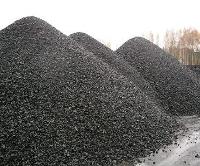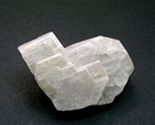
Thermal Coal

Barite
Barite is a mineral composed of barium sulfate, BaSO4. It is usually colorless or milky white, but can be almost any color, depending on the impurities trapped in the crystals during their formation. Barite is relatively soft, measuring 3-3.5. It is unusually heavy for a non-metallic mineral. The high density is responsible for its value in many applications. Barite is chemically inert and insoluble. It is a volcanic deposit and in India its occurrence is limited to Mangampeta deposits of Andhra Pradesh. It estimates a reserve of over 100 million tons and it is the single largest deposit of its kind in the World. Most barite is mined from layers of sedimentary rock which formed when barite precipitated onto the bottom of the ocean. Some smaller mines utilize barite from veins, which formed when barium sulfate was precipitated from hot subterranean waters. In some cases, barite is a by-product of mining lead, zinc, silver or other metal ores The principal use for barite is as a “weighting agent” in oil and natural gas drilling. In this process, barite is crushed and mixed with water and other materials. It is then pumped into the drill hole. The weight of this mixture counteracts the force of the oil and gas when it is released from the ground. This allows the oil and gas rig operators to prevent the explosive release of the oil and gas from the ground. However, the consumption in drilling "mud" fluctuates from year to year, as it is dependent on the amount of exploration drilling for oil and gas, which in turn depends on oil and gas prices. Mining is semi-mechanized. It starts with stripping of the over-burden which exposes the ore-body. Being a relatively soft material barite is easily sized in a jaw crusher yielding the right size for grinding in Raymond Mills. The milled product is collected in bags of 50 kg / 1500 kg and stacked in warehouse.
...more
Anthracite

Limestone

Steam Coal
Be first to Rate
Rate ThisOpening Hours